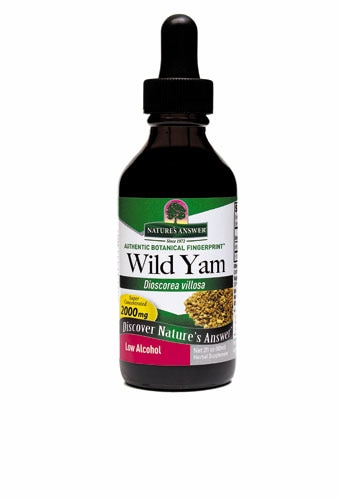An optimal level of estrogen is your strongest ally in the realm of hormone health. Operating as your “feminine hormone”—if you will—it encourages a host of wonderful, deeply felt benefits, from a heightened libido to a brighter mood and enhanced energy.
Too little or too much estrogen, however, can be profoundly felt. Not enough estrogen results in symptoms of anger, irritation, anxiety, insomnia, and physical discomforts—like joint pain. Too much estrogen, and the wrong kind of estrogen, can also result in its own complications—including ovarian cysts and exacerbated premenstrual symptoms—and as we reach menopause, estrogen levels plummet and can take its toll on life’s quality.
Enter the importance of filling your plate with estrogen-friendly foods. While certainly no substitute for estrogen itself, these eats may promote healthy estrogen metabolism and leave you feeling fantastic. Here are five of the best estrogen-balancing foods out there—and how you can weave them into your diet.
1. Flaxseeds
Falling into the family of lignans—a polyphenol found in plants—flax seeds have been praised for a variety of health benefits, including improved digestion, heart health and, yes, hormone balance. Also known as linseed, the small seed—in colors ranging from brown to tan—is what’s known as a phytoestrogen, in that it binds onto estrogen receptors on cells. It can also help the body get rid of unfriendly estrogen. In turn? You may experience less-intense hot flashes, diminished PMS symptoms and fewer joint pains
Unsure how to eat them? You can reap the most of their benefits when they’re sprouted and ground into flaxseed meal (whole flax seeds travel right through your body without being digested), which you can then sprinkle into your smoothie, yogurt, oatmeal and baked goods. Take this tip: Given their high amount of fiber, flax seeds should be consumed with an ample amount of water.
2. Alfalfa sprouts
Low in calories and high in vitamins and minerals, those sprouts you might find in your salad or sandwich are a boon for those looking to boost estrogen naturally. Constituting a category of phytoestrogens called coumestrols, alfalfa sprouts—which come from a germinated alfalfa seed—encourage estrogen regulation, which may provide relief from PMS and menopause symptoms. What’s more, alfalfa sprouts are high in v nitamin K—a blood-clotting vitamin that can help with the excessive bleeding some may experience during menstruation. (Alfalfa’s cousin—mung bean sprouts—help moderate cortisol and support adrenal health.)†
Alfalfa sprouts’ mild, slightly-nutty taste is best appreciated exactly where you usually find them: In a sandwich or a salad. For a protein and fiber-rich creation, stack toasted, dark rye bread with avocado, alfalfa sprouts, cucumbers, and goat or provolone cheese. Dark rye is another phytoestrogen, vegetables offer excellent antioxidants, and cheese brims with calcium, which those with low estrogen levels may be depleted of (and explains why women are at a greater risk of osteoporosis). Meanwhile, avocados are packed with beta-sitosterol, which aids in balancing the stress hormone cortisol and in increasing progesterone—which is also key to finding hormone equilibrium.†
3. Soy
Soy foods—tofu, tempeh, miso and natto, to name just a few—burst with isoflavones, another type of phytoestrogen. Thought to be the most widely-studied phytoestrogen-rich food, soy not only binds to estrogen receptors on cells, but is also high in protein and healthy fats. And while soy—as well as other phytoestrogens—has been under scrutiny for its possible link to an increase in cancer, a review of clinical studies, featured in the American Journal of Clinical Nutrition in 2014, “found that soy consumption reduced the recurrence of tumors among cancer survivors by 25 percent,” the San Francisco Chronicle reports. The authors, the Chronicle also says, “cited other potential benefits for menopausal woman—most importantly, protection against heart disease.” †
Not into the texture of tofu? Try edamame. The whole, immature soybeans have impressive levels of protein, folate and manganese, all of which contribute to a healthier, happier you.
4. Dried fruit
Many women eschew dried fruit because they’re densely caloric—as little as two Medjool dates contain roughly 120 calories. It’s a shame, as dried fruits—dates, of course, but also dried apricots and prunes—pack a powerful nutritional punch. Studies conducted by the Linus Pauling Institute of Oregon State University found that these dried fruits—also phytoestrogens—may help support healthy estrogen in the body.† (Why dried instead of fresh? They contain higher amounts of phytoestrogens.) Additionally, dried fruit is “choke full of vitamins, minerals, fiber and phytochemicals. Plus, it’s non-perishable, palatable and great for eating on the run,” says Laura Hartung, RD.
Aside from snacking on them, dried fruit can make a tasty addition to a salad. You can also get creative by stuffing Medjool dates with a number of combinations. A few to try? Honey, goat cheese, and walnuts; Greek yogurt and blueberries, and orange zest and ricotta. Just remove the pit, stuff away—and relish.
5. Broccoli
You may have pushed away your broccoli as a child but now you should reach for it—and often at that. Not only does broccoli (as well as other cruciferous vegetables such as cauliflower and Brussels sprouts) contain estrogen-regulating indole-3-carbinol, it’s loaded with phytoestogenic compounds that may encourage sound estrogen levels. Furthermore, the little green trees help to rid environmental or “bad” estrogens from the body, says Marci Clow, MS, RD, and Senior Nutritionist at Rainbow Light.†
Bemoaning the idea of simply eating broccoli steamed? Spice it up. Roast broccoli florets with lemon, olive oil, parmesan cheese, fresh parsley and garlic. You’ll hardly realize that the treat is doing wonders for your body.
†These statements have not been approved by the Food and Drug Administration. These products are not intended to diagnose, treat, cure or prevent disease.
Looking for additional support? Check out these helpful solutions:







